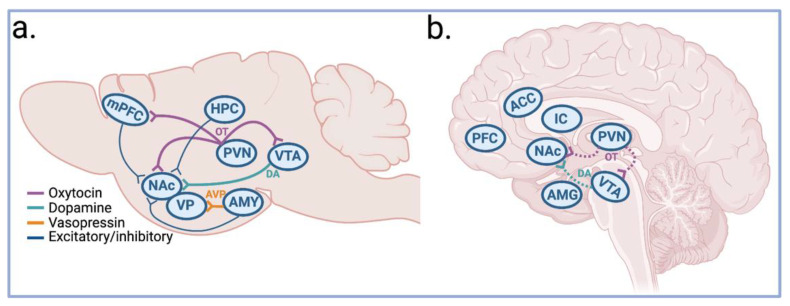Figure 3.
Comparison of brain regions involved in pair bonding and love across species. Similar brain regions are involved in pair bonding and romantic love across species. In rodents, the involvement of neural circuits and neuromodulators can be studied, whereas, in human fMRI, nodes of activation and deactivation are examined. (a) In prairie voles, oxytocin (OT) produced in the paraventricular nucleus of the hypothalamus (PVN) is released to medial prefrontal cortex (mPFC) and nucleus accumbens (NAc). Neural entrainment of the mPFC and NAc predicts pair bond formation. Representations of the partner are likely encoded by cells in the hippocampus (HPC) and the extended amygdala (AMY), regions that project to the NAc and may contribute to the rewarding properties of partner-related stimuli. The ventral tegmental area (VTA) releases dopamine (DA) to the NAc. Vasopressin (AVP) is released from the AMY to the ventral pallidum (VP) to facilitate pair bonding. (b) In humans, the NAc and VTA are activated upon viewing images of one’s partner, both regions in the mesolimbic DA system, and this activation is enhanced by IN-OT. Dotted lines represented inferred circuits based on neuroimaging studies in conjunction with IN-OT administration. Other regions activated include the insular cortex (IC), anterior cingulate cortex (ACC), and substantia nigra (SN). Deactivation is seen in the AMY and PFC. Figure created with BioRender.com (accessed 4 June 2023).

